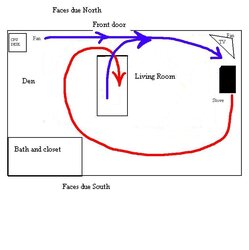I've been thinking about this today and I'm going to try it when I get home tonight. I'm going to aim a standard house fan to blow air on the front of my Avalon Rainier insert and see if it makes the room hotter. There is a built-in automatic fan which circulates air around the stove and blows it out the top/front, but the air speed is rather slow in my opinion.
Can anyone think of any drawbacks to this?
Can anyone think of any drawbacks to this?


